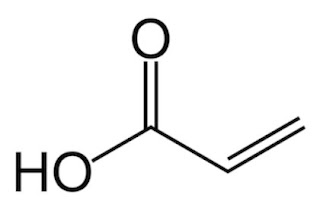S2G BioChem to build demo biorefinery in Sarnia for producing xylitol and bioglycols
S2G BioChem
(S2G) is a sustainable chemicals company with offices on the campus of the UBC
(University of British Columbia) at the National Research Council Facility in
Vancouver (Canada). This firm announced on 20th June (see press release) that it has started work on its
first standalone demo biorefinery that it intends to build in Sarnia (Ontario,
Canada). The city already houses the succinic
acid plant of BioAmber and will be the location of the 2G
dextrose plant of Comet Biorefining as well.
The demonstration plant, projected to cost
$20M, will be funded by S2G and a network of investors and partners including
previously announced support from the global food giant Mondelēz International who
shares the vision of the project. Funding will be provided by the Centre for
Commercialization of Sustainable Chemistry Innovation of Bioindustrial Innovation Canada (BIC).
Project datasheet:
Location
|
Sarnia
(Ontario, Canada).
|
Feedstock
|
Local,
sustainable forestry and agricultural residues.
|
Products
and production capacity
|
2,000
tons/year of xylitol and coproducts (bioglycols).
|
Process
|
Catalytic
hydrotreating.
|
Timeline
|
Basic engineering for the facility is
underway and construction is expected to begin in 2018.
|
Employment
|
The operation will require 13 permanent jobs.
|
S2G's conversion technology uses
sustainably-sourced renewable feedstocks (non-food C5 sugars from biomass and
optionally waste glycerol) to concurrently produce xylitol and bioglycols (ethylene
glycol, propylene glycol and related products). Xylitol is a natural,
low-calorie sweetener, offering high sweetness, oral health benefits and 1/5 the
glycemic index of table sugar. Bioglycols are sustainable drop-in replacements
for petrochemicals that can be used to make countless everyday products such as
packaging, lotions, liquid detergents and deicing fluids.
The process is based on a 2-stage conversion. Firstly, contaminants are removed from crude sugar liquors. Secondly, catalytic hydrotreating is used to convert sugar to xylitol and the mix of glycols. It ends with the separation and purification of the products. SG2 owns a pilot plant which is operating since November 2012. The pilot plant replicates industrial conditions through 24h/d operations. Also, S2G process was integrated into an existing chemical facility of Pennakem in 2016 (see press release). In this way, it could complete a biobased glycols production campaign and initiated industrial product sales.
The process is based on a 2-stage conversion. Firstly, contaminants are removed from crude sugar liquors. Secondly, catalytic hydrotreating is used to convert sugar to xylitol and the mix of glycols. It ends with the separation and purification of the products. SG2 owns a pilot plant which is operating since November 2012. The pilot plant replicates industrial conditions through 24h/d operations. Also, S2G process was integrated into an existing chemical facility of Pennakem in 2016 (see press release). In this way, it could complete a biobased glycols production campaign and initiated industrial product sales.




